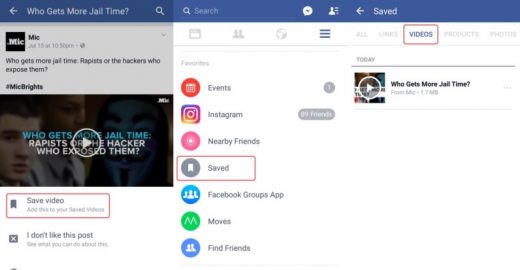What 12 Years of Facebook Ads Can Teach Us About Performance Marketing
— August 23, 2019
Facebook wasn’t always the huge ad network it is now. In 2006, Facebook had only one advertiser, Microsoft, and one audience, which the New York Times described as “young, educated spenders.”
Oh, how times change.
Now 2.3 billion people and over 6 million advertisers use Facebook. There are 90 million business pages. For marketers, using Facebook ads is often the best way to reach out to the customers they need.
Not every Facebook ad is successful. Most are not. There’s one method that rises above the rest to succeed on Facebook: performance marketing.
Why performance marketers will inherit the Facebook world
Performance marketing is an analytical game: the more you experiment, the greater the reward.
The Performance Marketing Association defines PM as:
Online marketing and advertising programs in which advertisers (a.k.a., “retailers” or “merchants”) pay marketing companies (a.k.a, “affiliates” or “publishers”) when a specific action is completed, such as a sale, lead, or click.
In plain English, performance marketing is all about getting people across the conversion finish line. When a conversion action is completed, the publisher (in this case, Facebook) gets paid. Of course, the vendor gets paid, too, in new business. This isn’t brand-building or engagement. This is pure, bottom-of-the-funnel acquisition.
The Facebook ecosystem is perfect for performance marketing, since user actions are easily measured. For instance, Facebook Ads Manager makes it easy to set conversion as your goal and define what kinds of conversions.
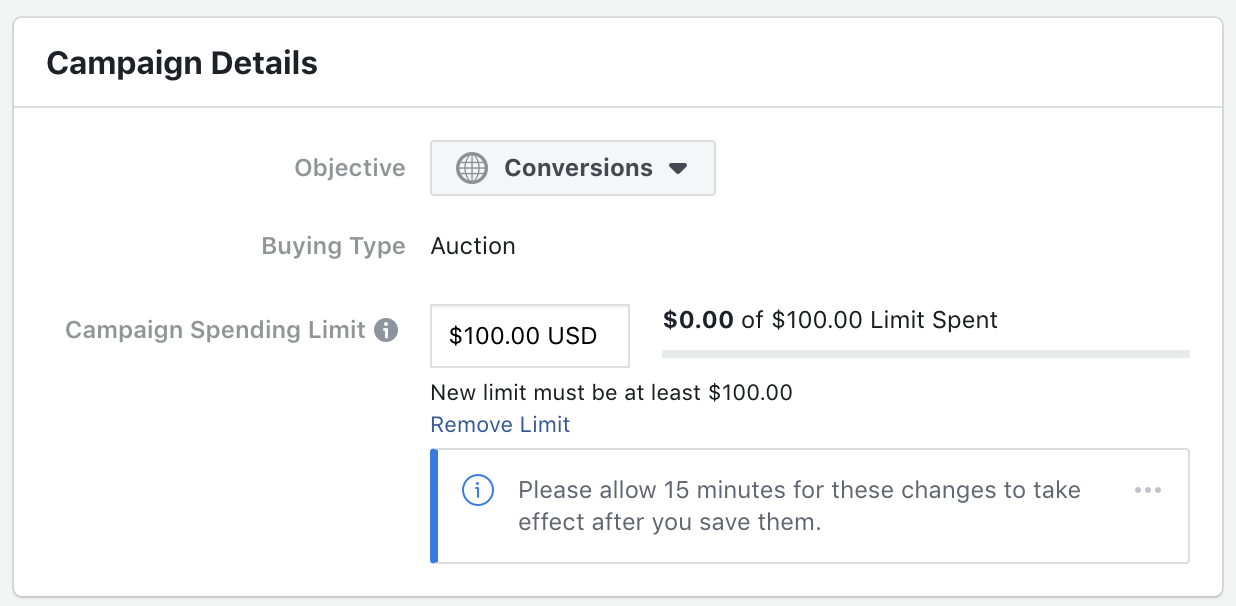
Additionally, you can run campaigns over short periods to iterate quickly. You can run as many campaigns as you want (and your budget allows), since you’ll never run out of audiences and lookalike audiences.
To improve your performance, it helps to know what works and what doesn’t and why. As Facebook continues to grow, marketers who monitor, analyze, and optimize their ads will consistently get the results they want.
Here’s a brief history of how Facebook became the perfect system for performance marketing, and what the future holds for marketers on Facebook.
Early days (2007-2009): Marketing goes social
In November 2007, Facebook unveiled Facebook Ads for the first time. In the succeeding years, leading up to Facebook’s first billion dollars in ad revenue, Mark Zuckerberg made his intent clear: ads would be shaped by what people shared about themselves online.
“Facebook Ads represent a completely new way of advertising online,” Zuckerberg announced. “For the last hundred years media has been pushed out to people, but now marketers are going to be a part of the conversation. And they’re going to do this by using the social graph in the same way our users do.”
In March 2009, Facebook rolled out language and location-based targeting features. Here’s what Ads Manager looked like then:
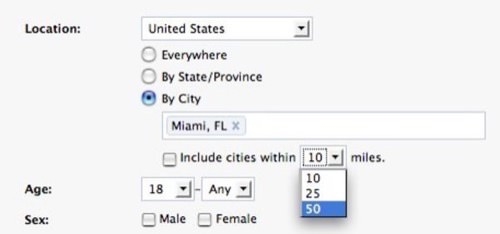
(Image: readwrite.com)
These early targeting techniques made it easy for businesses to narrow down their audience by demographics, which is a great starting point.
Performance marketing takeaway: Targeting at a broad level, by demographic info, is effective and necessary. But it’s only the first step.
But as people began to share more online, Facebook began developing new products, and more businesses decided to sign up for Facebook. The competition started getting a little stiffer. Things began to grow more complex.
2010-2013: Experimenting, failing, and tightening the algorithm
It took several years of trial and error for Facebook to get to its current, relatively precise targeting system. Facebook’s business leaders were performance marketers themselves: constantly experimenting to unlock massive growth for the company.
In 2010, Facebook introduced its mobile app, creating a whole new group of audiences and changing the News Feed into a 24/7 activity center. This was great for advertisers working with Facebook: they could reach people wherever, whenever.
Then in 2011, Facebook tried out a new ad product called Sponsored Stories. Through sidebar posts, Sponsored Stories let people know when their friends engaged with a business. You’d think this would be an effective way to harness word-of-mouth. But Facebook paid attention to the data, and the product closed three years later due to its unpopularity.
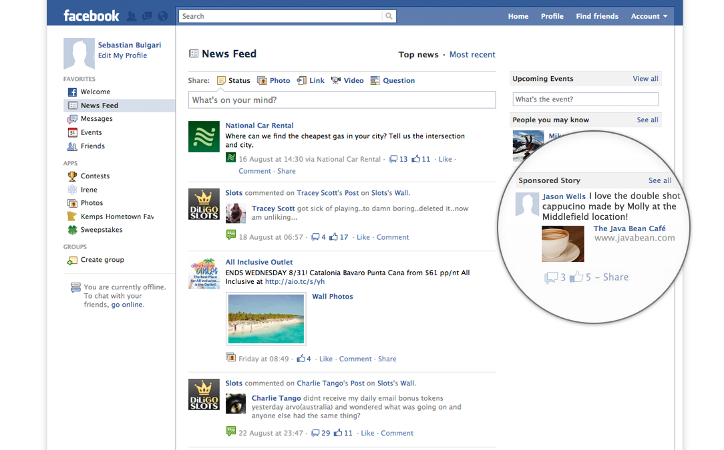
(Image: wearesocial.com )
After that misstep, Facebook took in some feedback from its advertising partners, and in June 2013, the social network giant announced a simplification of their ad system for businesses, cutting their number of ad units by over 50%.
By the autumn of that year, Facebook announced changes to its ad relevancy algorithm. The announcement stated:
“When deciding which ad to show to which groups of people, we are placing more emphasis on feedback we receive from people about ads, including how often people report or hide an ad.”
Facebook technology was getting smarter about what ad content spoke to people, and what they responded to.The algorithm could tell which ads people skipped immediately and which ones made people curious to know more. Performance marketers who were tinkering with the system could also see what was working in terms of awareness, engagement, and conversion.
Performance marketing takeaway: Gathering qualitative feedback from users is equally as important as quantitative, behavioral feedback. Data + anecdotal evidence = greater ad relevancy.
Behavioral trends, and feedback, seemed to all point in one direction.
2014-2018: The video era begins
It soon became apparent that one ad type was rising above the rest: video. Facebook’s own data suggested that video was more engaging and effective than static images or text posts. Their “video-first” attitude gave marketers reason to hop aboard the video train as well.
At the end of 2013, autoplaying video ads entered the News Feed. Rather than asking viewers to click Play, a video would start playing without sound as soon as the viewers scrolled by. It worked. That same year, ad revenue passed $ 6.9 billion.
That wasn’t the only milestone. A 2014 press release stated: “Growth in video views exceeded 50% from May through July of this year, and since June there has been an average of more than 1 billion video views on Facebook every day.” One. Billion. Views.
The statement continued: “Video on Facebook was built to be mobile first, and now more than 65% of video views are on mobile.”
As video continued to blossom, Facebook continued to release new video products and features. In 2015, live video for all was introduced as was 360 Video. The company started testing “suggested videos” on mobile and “save for later ” buttons for when you can’t listen to sound.
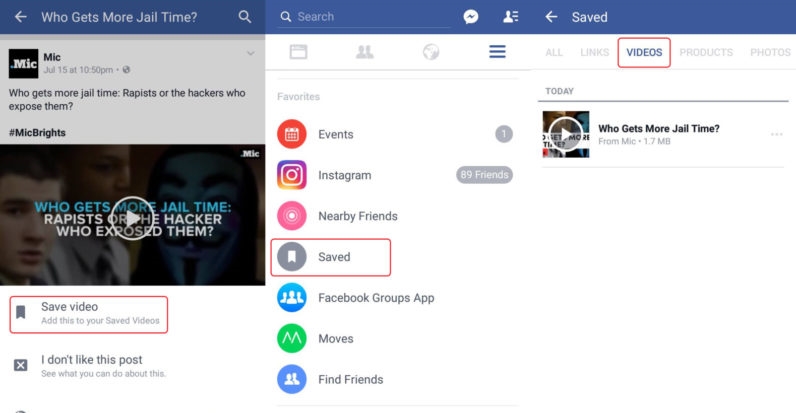
The new features improved user experience. Facebook realized the more that users could control their own ad experiences, the more likely they’d be receptive to ads. So in 2016, Facebook made individual users’ ad preferences more easy to navigate, making it easier for people to avoid bad ads.
Performance marketing takeaway: The more (mobile) videos you use in your ads, the better your ads will perform. The more choices you give your ads audience, the more receptive they’ll be to your content.
In 2017, Facebook ad revenue passed $ 49.9 billion.
2019-?: Video at scale
Up until recently, only big businesses that hired expensive production agencies could create video ads. But now, anyone can, leading to the era of video at scale.
In 2018, Facebook rolled out a set of basic mobile-first video creation tools for advertisers. The “Create to Convert” tool helps advertisers add motion to still images. The press release rolled out these statistics:
“mobile-first creative has a 27 percent higher likelihood of driving brand lift and 23 percent higher likelihood of driving message association compared to video ads that are not optimized for mobile.”
We at Shakr, which launched way back in 2010, could have told you that. Our tools make video production accessible to businesses across the spectrum, from mom-and-pop shops to huge enterprise tech firms. Helping everyone make video that looks good across devices will increase ad quality, relevancy, and conversion across the board.
So what’s next for performance marketers using Facebook?
Facebook’s advances in ad and video technology lead to an inevitable conclusion.
Performance marketing takeaway: The future will look like lots of highly targeted videos at scale.
That means serving up personalized video ads to several audiences, or thousands of people, at once. You can do this quickly using video templates. Simply pop in a few images in a Shakr template, upload to Ads Manager, and let the ads run.
Digital & Social Articles on Business 2 Community
(26)

